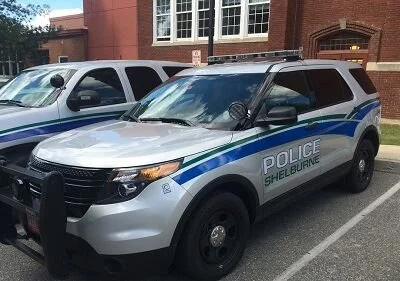Study serves as prompt for Shelburne to face racial issues
Town leaders questioned the reliability of a study on traffic reports at the March 9 selectboard meeting, but could not deny the implicit biases that must be addressed in Shelburne.
The study was co-authored by UVM Professor Stephanie Seguino, Data Analyst Pat Autilio and Nancy Brooks, a Visiting Associate Professor at Cornell University. The data collected from 2014 to 2019 showed racial disparities statewide, including Shelburne, where Black drivers are 4.4 times more likely to be stopped by police, the study found.
Selectboard and community members spoke on the study at the Feb. 9 selectboard meeting and were concerned about what the report showed in Shelburne. However, many members, including Town Manager Lee Krohn and Police Dispatcher Jim Mack, had concerns about the study. Chairman Jerry Storey felt it would be best to invite Seguino to a meeting to clear up any confusion surrounding the findings in the report.
The main concern with the report was that the sample size or data used was too small to prove that Black drivers are more likely to be targeted by police officers conducting traffic stops in Shelburne.
“Many of the conclusions are based on presumptive sort of language that the reasons for all this may be based on bias and of course...those are pretty serious accusations and I’m not sure whether the data offered actually leads to the conclusions that others have claimed this study attempts to prove,” Krohn said.
Seguino and Autilio both presented their findings to those at the selectboard meeting to provide clarity. Autilio was responsible for pulling data from all agencies across Vermont to create a format that Seguino and Brooks could analyze.
To find the driving population in Shelburne, Autilio used census data for the county, as well as the accident data from the Department of Motor Vehicles. Seguino said that because accidents are random, they are able to make a fairly good estimate of racial shares of the driving population with the accident data.
“That is generally considered the gold standard when you’re trying to get a notion of the racial makeup of the driving population because it reflects who is actually on the road,” Autilio said.
The study focused on traffic stop data submitted to the state by police departments annually. Each traffic stop was broken down into four actions: a warning was given, a ticket was given, an arrest was made, or a search was conducted—and if so, was contraband found. The authors compared these findings between people whose race were White, Black, Asian, Hispanic, Native American and unknown.
Autilio pointed out that drivers in Vermont do not have their race printed on their driver’s license, so officers must assume a person’s race when filing a traffic stop report.
“An officer’s perception of that driver’s race is going to influence that officer’s reaction or how they behave or what actions they take as a result of that stop. So, the officer’s perception is actually a pretty good data point for us to be using,” Autilio said.
Seguino assured members that she has seen first-hand during ride alongs that officers do their best to guess a driver’s race and are not purposefully reporting the wrong race.
Seguino also addressed the concern that the report used a small sample size to show racial disparities.
“We look at a variety of indicators because every indicator has its weaknesses and what we look for is to see if there is a pattern across the data. So, we have various indicators that all tell a similar story [in this report]. I think you can draw your conclusions about the data for Shelburne on that,” Seguino said.
“Even if there is some mismeasurement in using the accident data...the disparity is very large,” Seguino said. “As an analyst if you had racial disparities in stopped drivers, but none of the other indicators, I would say well this isn’t telling me a consistent story, but we’re seeing [disparities] in every single indicator we looked at.”
Members, Michael Ashoosh and Storey, both asked Seguino what may cause racial disparities in towns like Shelburne. Seguino’s answer: unconscious bias.
“We often are unaware of that behavior and I think it influences how we interact with people,” Seguino said. “I don’t take any joy in presenting these results and in any way insinuating that people have racial animus...but it is something that we all experience in this country.”
Storey said that after reading the study, he views it as a prompt for the town to look inward at the inequity in the community.
After hearing from Seguino and Autilio, Krohn said that although he questions the statistical reliability still, he would never suggest that the report’s findings do not serve as an opportunity for self-evaluation and to see where the town can improve.
“I think we can question the reliability and accuracy, but it’s not going to get us off the hook. I think it shows we have a problem, and we need to address it,” Ashoosh said.
One way the town is facing these problems is with an equity and diversity task force. Task Force Members Erika Lea, Yasamin Gordon, Patricia Fontaine and Cate Cross were all at the selectboard meeting. The group plans to meet at least once a week to provide a roadmap for the selectboard on how to tackle inclusion, diversity and equity in Shelburne at the March 23 meeting.
In other action, the board welcomed new members, Cate Cross and Luce Hillman to the team. The board also approved a draft of the selectboard work plan for 2021. Members agreed it was ambitious, but that it reflected the needs of the town.
The board also appointed Henry Harder to the Veterans Monument Committee for a 3 year term.







